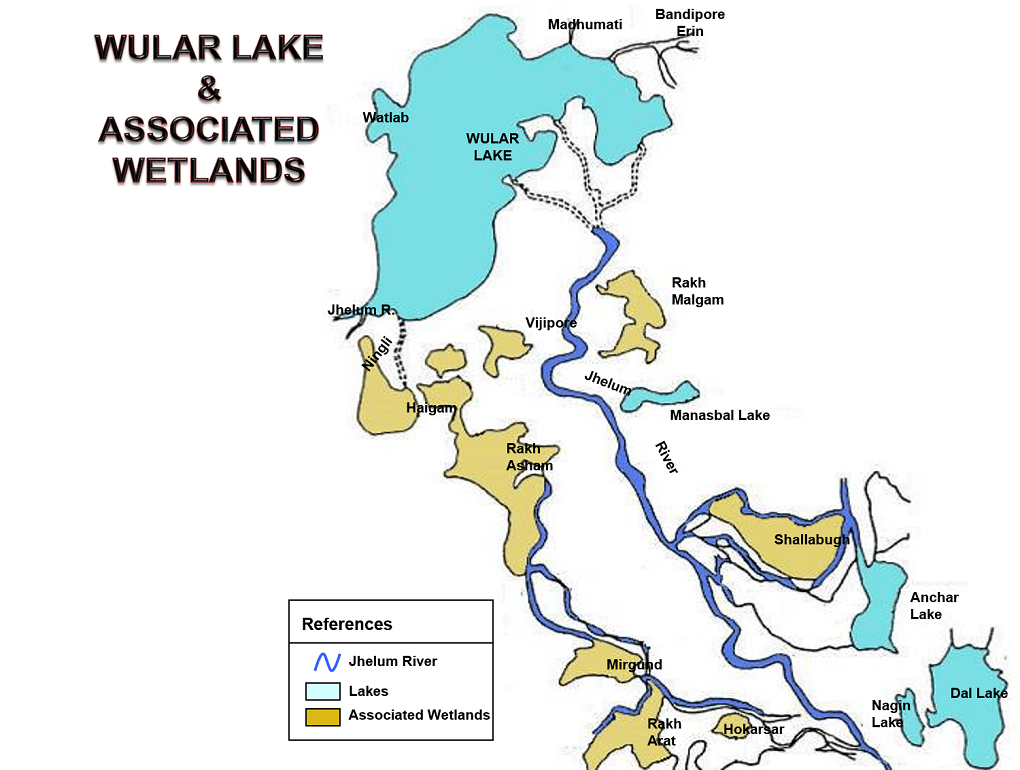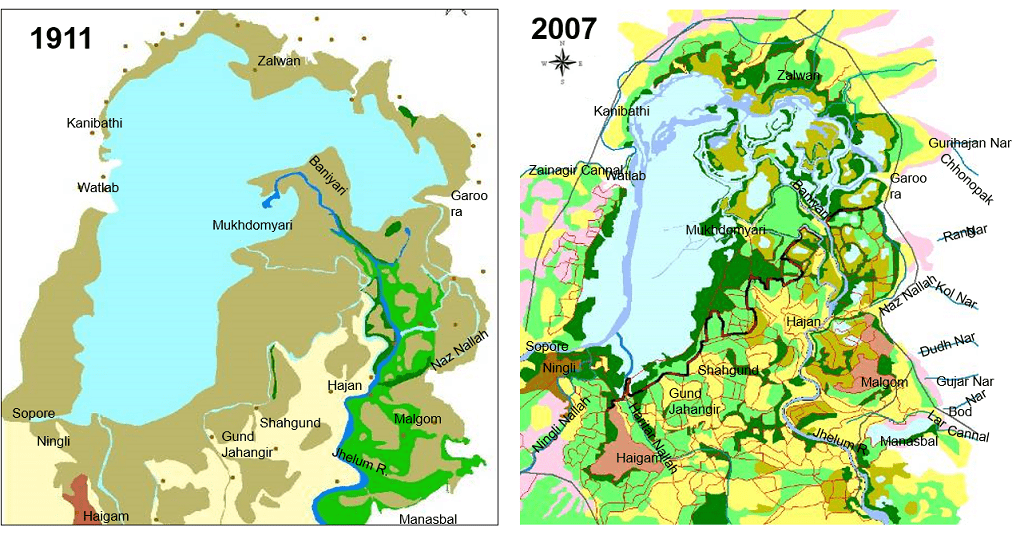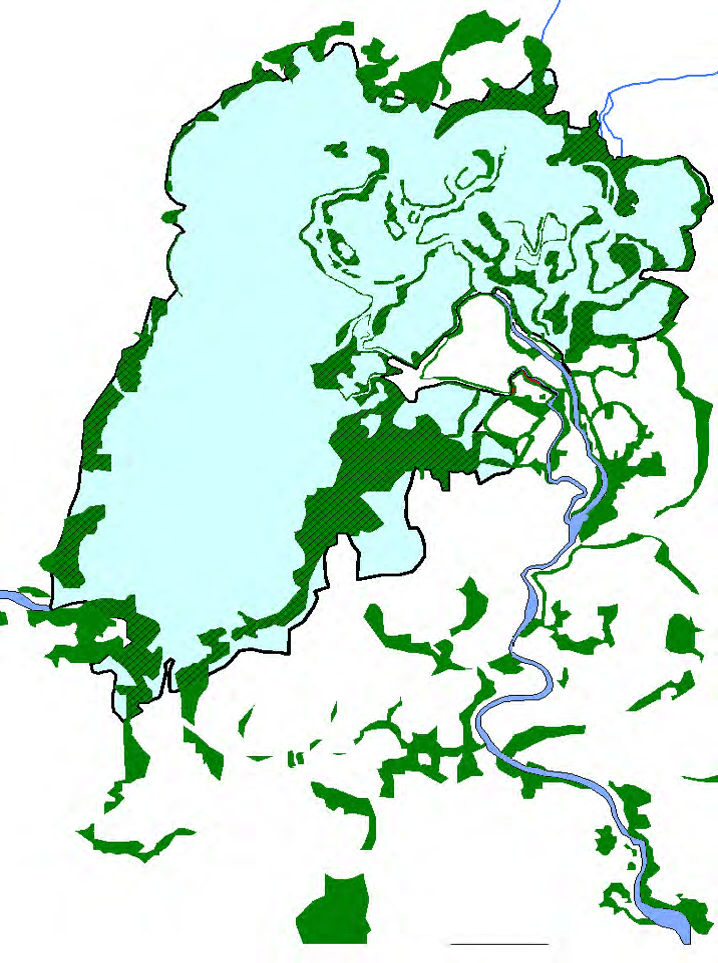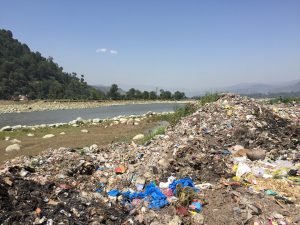As part of conservation of the world famous Wular Lake, the Wular Conservation and Management Authority (WUCMA) of Jammu & Kashmir government has so far removed 58,000 willow trees from the lake and plans to remove 133,000 more in the next two years. There are over two million willow trees in Wular Lake which WUCMA plans to remove. It wants to phase out the removal so as to avoid abrupt environmental damage and a market crash.
WUCMA also plans to carry out a massive desiltation operation and other treatment measures in and around the lake in the next two years as part of a “complete rejuvenation” project. Wular Lake has suffered huge degradation in recent years which include siltation, heavy pollution and area-reduction.

Overlooked by the magnificent Himalayas, Wular Lake is one of the largest freshwater lakes in Asia and the largest flood basin of Kashmir. It is located in the northern Bandipora district 34 km north of Srinagar, the summer capital of Jammu & Kashmir. Once known for its depth and pristine waters, the lake has suffered large-scale degradation in recent decades.
Besides being the source of over 60% of the fish eaten in the Kashmir valley, the lake provides livelihood support to thousands of people in the form of plant products like water chestnuts, lotus roots and fodder. It is a resource for drinking water and irrigation; overall, it regulates hydrological regimes in the Kashmir valley.
A detailed study of the lake by Wetlands International stated that in 1911, the area of Wular Lake was 157.74 square kilometres (excluding the associated marshes) and 217.8 square kilometres (including the marshes). But by 2007, the lake area (excluding marshes) shrank to 86.71 sq km, a 45% reduction. The study says this was mainly due to conversion of parts of the lake for agriculture and willow plantation.

Wounds inflicted by willows
Willow plantation in Wular was started in 1924 and the plantation area was put under the supervision of Kashmir’s forest department. In the 1980s and 1990s, massive plantation was carried out by a wing of the region’s agriculture department in various areas to meet firewood and industrial needs. This resulted in the proliferation of willow trees in many parts of the lake.
Irfan Rasool Wani, forest conservator and coordinator of WUCMA, said that willow plantations in the lake now cover an area of 27.30 sq km, according to remote sensing images.
In recent years, with siltation issues of Wular Lake receiving much attention, experts in Kashmir University and trained foresters like Wani have traced the cause of heavy siltation in the lake to presence of millions of willow trees in the lake.
“These plantations act as a barrier to silt-laden waters of the Jhelum river forcing it to discharge the sediment load into the lake, thereby reducing its water-holding capacity,” said Samiullah Bhat of Kashmir University’s Environmental Sciences Department. The detritus from the plantations, he said, has also accelerated nutrient enrichment in the lake leading to water quality deterioration. Bhat was part of the team which prepared the environmental impact assessment report for the removal of willow trees at Wular Lake.
According to him, the benefits of removing the willows from Wular “generally outweigh” the negative impacts of their removal. The report prepared by Bhat and other experts, however, recommends that the process of removal should be undertaken in a phased manner.
Talking about the negative impacts, Bhat said that the decrease in shady area following willow removal can lead to increased summer water temperatures and also have the ability to affect disease resistance in adult fish.
He said that areas from where the willows are removed need to be specially monitored as invasive plants are likely to be the first colonisers in view of nutrient flushes and disturbances created by willow removal.
Wani told thethirdpole.net that the majority of over 2.1 million willow trees need to be removed in the coming years to enhance the water holding capacity of the lake. He said that the areas where these willows are concentrated are severely silted and have reduced the water holding capacity of the lake by 20%.

He said that WUCMA plans to remove another 133,000 willow trees by the end of 2021. “We are removing the trees selectively. This will help in avoiding abrupt environmental costs and market crash,” Mehmood told this reporter.
Referring to the demarcation of the wetland area, he said, “The demarcation of the Wular Lake has been carried out as per revenue record and stands completed. The concrete boundary pillars have been fixed all over the periphery of the lake. The boundary line has been duly digitised using GPS and remote sensing technology and each boundary pillar has been properly geo-referenced.”
19 billion rupee project and the Indus Waters Treaty
WUCMA has prepared a detailed project report for the “complete rejuvenation” of the lake with a projected cost of 19 billion rupees (USD 266 million). The project, among other things, will include dredging of 2.90 sq km of the lake from which 6.4 million cubic metres of soil will be taken out and used for further embankment and water management of the lake. This huge expense at a time of great uncertainty in Kashmir raises uncertainties about the project.
![Boatmen at the northern shore of Wular Lake near Watlab-Sopore town [image by: Athar Parvaiz]](https://dialogue.earth/content/uploads/2020/01/Boatmen-at-the-northern-shore-of-Wular-Lake-near-Watlab-Sopore-town.-Photo___Athar-Parvaiz.jpg)
Officials of Kashmir’s Irrigation and Flood Control (IFC) department – which has already carried out some minor work for embankment of the lake over the last two years – said that such work falls within the norms of the IWT. “This work is simply conservation work and is completely treaty-compliant. We are not going to raise the water level. We will just maintain the water level [through embankment],” an IFC official said.
He added, “Conservation part is under Article I and Article III of the Indus Waters Treaty. It is permitted. You can use a water body for recreational purpose, flood storage, drinking, irrigation, aquatic life and navigation.”
![<p>Willows choke the Wular [image by: Joydeep Gupta]</p>](https://dialogue.earth/content/uploads/2020/01/Willows-on-Wular-banks-April-2015-Joydeep.jpg)








![In the buffer zone of the Chitwan national park, the Nepal Amry's relations with locals have moved from conflict to cooperation [image by: Mukesh Pokhrel]](https://dialogue.earth/content/uploads/2020/01/IMG_3490-300x200.jpg)